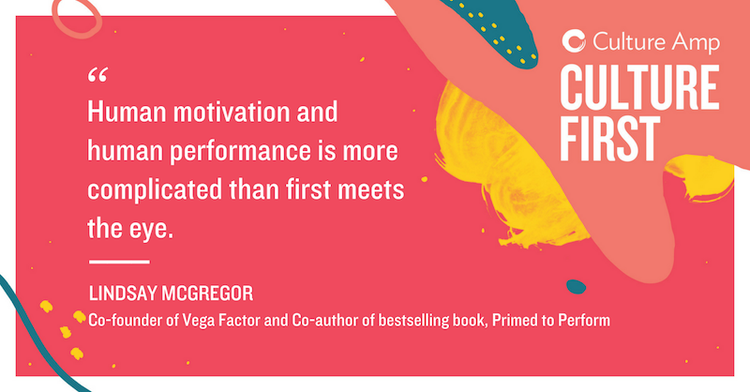
Article

At the Culture First conference, Lindsay McGregor’s keynote answered three questions:
Lindsay explains that there are two types of performance:
To help us understand these definitions, Lindsay provides the example of a call center:
Have you ever been on the phone with somebody reading a script to you? How does that feel? Painful. That call center has doubled down so much on the tactical performance that they've started to destroy people's ability to adapt.
I'm guessing you've also been on a customer service call where you've asked three different representatives the same question and gotten three different answers. That's the call center that has not spent enough time on their tactical performance. Everybody has to adapt.
We show tactical and adaptive performance as a yin and yang because they're in fact opposites. And if you double down too much on one you start to destroy the other.
Organizations must find the balance between tactical and adaptive performance to get high performance.

“There’s only one way to get both tactical and adaptive performance,” says Lindsay. Why we work determines how well we work. Lindsay shares six motives (the result of 50-plus years of research) that drive our performance. Direct motives are related to the work we do, while indirect motives are not connected to the work itself.
“If you have lots of play, purpose, and potential and very little emotional pressure, economic pressure, and inertia – that drives adaptive performance,” says Lindsay. These motives are put together in a framework known as Total Motivation, “Tomo” for short.

The highest-performing cultures are built upon the psychology of total motivation. Lindsay and her team researched Tomo in thousands of people and over 50 major US companies to identify different systems within companies that affect total motivation.
Here’s what matters when it comes to creating high Tomo:
“Tomo doesn't mean that you have to be in low stakes low-pressure situations,” says Lindsay, “It means that when we have a difficult challenge, we should dramatically try to reduce the emotional and economic pressure you feel. You can have very high stakes and turn that into a deep sense of purpose instead of a deep sense of anxiety.”

In the full keynote, you’ll learn: